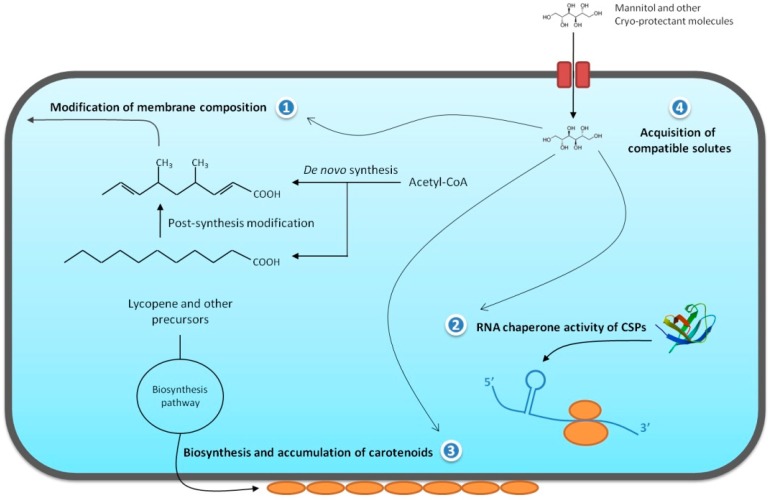Figure 1.
Representation of the main molecular modifications presented by bacterial cells during cold adaptation. Four adaptations are presented: (1) production of unsaturated branched-chain fatty acids to maintain membrane fluidity; (2) destabilization of adverse RNA structures by cold shock proteins; (3) production of carotenoids to assist in the maintenance of membrane fluidity and prevent cell damage by UV radiation; and (4) transport of compatible solutes such as mannitol to stabilize the cytoplasmic environment and prevent ice formation.

